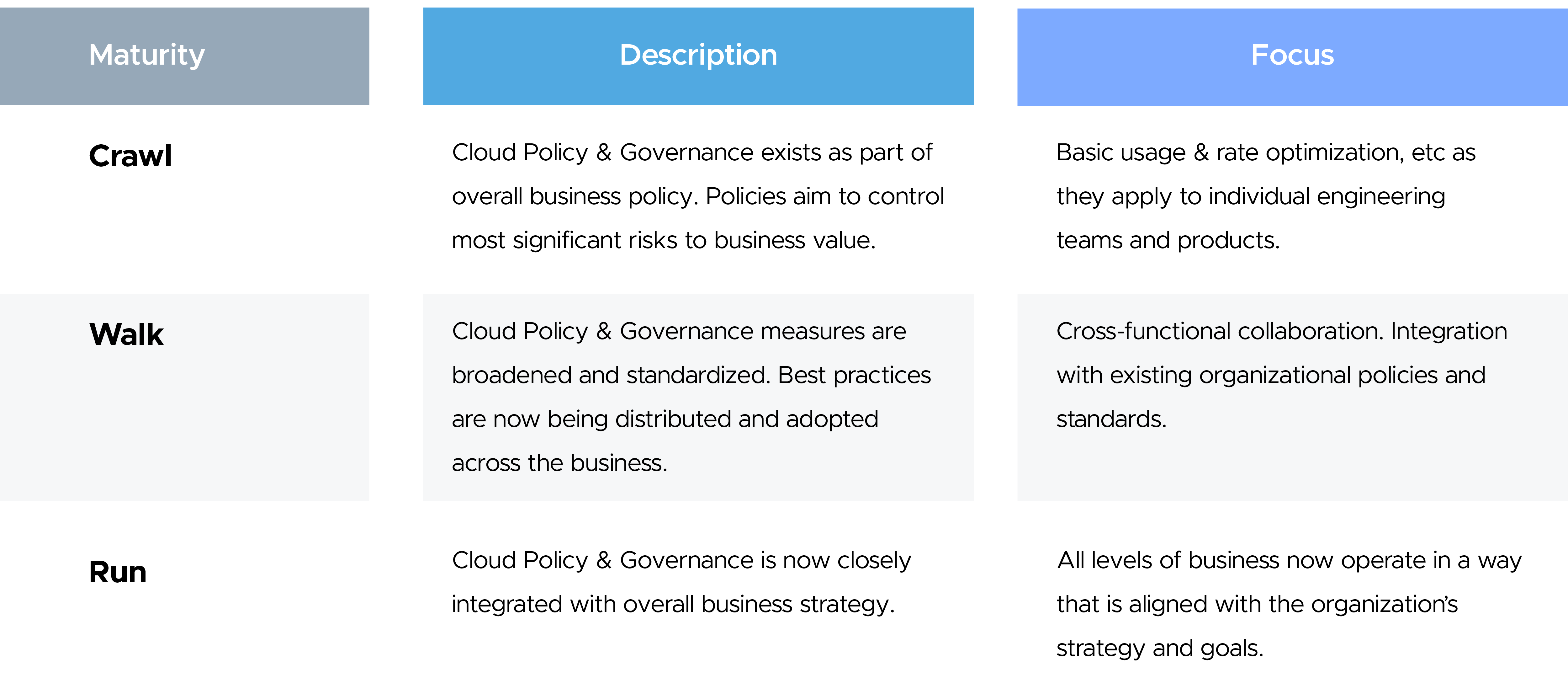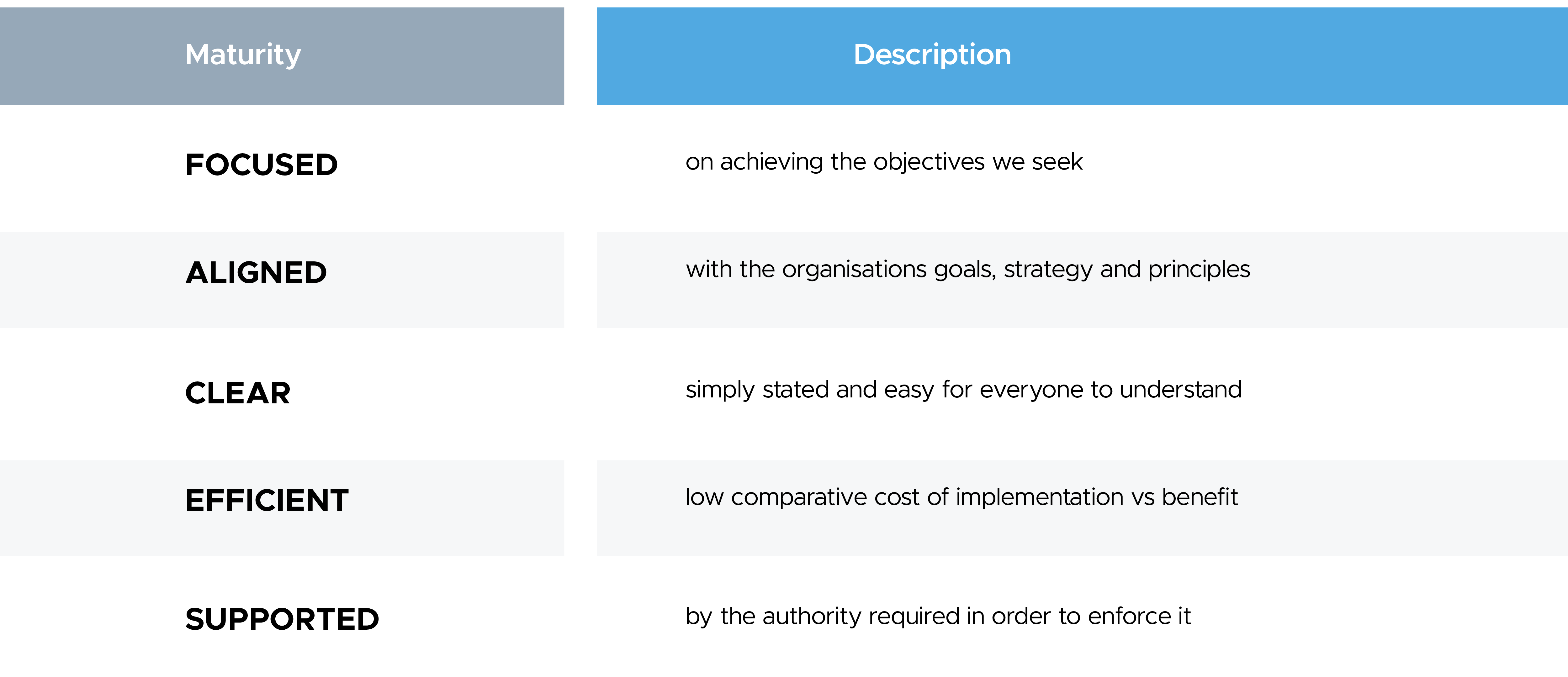The cloud has become a game-changer for organizations of all sizes, with its enticing blend of cloud cost savings and data-sharing capabilities being prime benefits. Driven by a compelling range of business advantages, enterprises are undergoing a massive cloud migration movement. As IT leaders manage the migration process, achieving a robust cloud environment is challenging.
Just like corporate governance is designed to cover corporate strategy, ethical behavior and risk management of the organizations, businesses must have a certain set of rules to handle the overall cloud efficiency and its costs. That is where cloud governance comes into play.
Whether it is AWS data governance, Azure governance, or GCP governance, their impact on business efficiency is of supreme importance.
What is Cloud Governance?
Cloud policy and cloud governance are like a set of rules and promises that state the intention and the approach to follow the rules of cloud-related activities for process streamlining.
According to the FinOps Foundation, a ‘Cloud Policy is a clear statement of intent, describing the execution of specific cloud-related activities in accordance with a standard model designed to deliver some improvement of business value’. Likewise, as per FinOps Foundation, ‘Cloud Governance is a set of processes, tooling or other guardrail solution that aims to control the activity as described by the Cloud Policy to promote the desired behavior and outcomes.’
FinOps Foundation states that Cloud Governance executes the Policy by the following three methods:
- Guidelines – that set out best practices for policy implementation and how it can be achieved. These are advisory, rather than mandatory.
- Guardrails – formal processes and structures that define mandatory pathways for policy-compliant action, possibly with consequences for non-compliance.
- Automation – processes that automate policy implementation and which therefore control how compliant actions are carried out.
Cloud governance helps in maximizing the ROI by aligning the activities within the cloud by supporting the consistent adoption of Cloud FinOps best practices. Together the cloud policy and governance help to organize and guide Cloud FinOps Activity.
Importance of Cloud Governance
Shifting from traditional data center practices to embracing the Cloud FinOps culture, characterized by specific attitudes and behaviors focused on extracting business value from cloud technology, poses a significant challenge. Policy and cloud governance help in establishing and sustaining Cloud FinOps culture.
A cloud governance framework is a structured and comprehensive set of policies, procedures, and controls that regulate how users work in cloud environments for consistent performance of cloud services and systems within an organization. It is crafted to ensure system integration, data security and efficient cloud deployment to meet business goals. Implementing and monitoring the cloud governance framework allows businesses to improve oversight and control over cloud operations like data management, data security, risk management, legal procedures, and cloud cost management.
The cloud governance has a few more advantages as follows:
- Reduces time and effort spent on manual tasks.
- Optimizes cloud resource management.
- Minimizes security risks.
- Improves visibility and business continuity.
- Regulates and monitors data access.
During the early stage of cloud adoption, Cloud Governance plays a crucial role in implementing FinOps personas across the organization. According to the FinOps Walk maturity model, organizations are classified into three categories namely Crawl, Walk and Run.

Source: https://www.finops.org/framework/capabilities/policy-governance/
Challenges faced in implementing effective cloud governance
Developing and implementing Cloud Governance in an organization involves a few challenges which need to be addressed.
- Cloud adoption: Transitioning from the traditional data center to cloud infrastructure involves several challenges like skill gaps, lack of metrics for measuring performance and risk, and credential and access management. Understanding the process of migrating from on-premises data centers and avoiding the cloud cost pitfalls is hence a crucial step.
- Integration with the existing IT infrastructure: Many organizations have existing IT infrastructure. For implementing effective cloud governance, a thorough understanding of the existing system, data flows, and dependencies is required.
- Balancing between security and compliance with innovation: Promoting innovation and agility without compromising on security and compliance is a challenge that cannot be overlooked. Cloud security challenges like data breaches and system vulnerabilities require careful planning and designing of policies and controls. Building a strong cloud governance strategy helps in keeping the organization’s cloud environments safe from adversaries.
Key components of a robust cloud governance strategy
The following are the key components of the cloud governance strategy:
- Data Management: Data classification according to risk, business value, and compliance requirements provides clear guidance for managing the entire data lifecycle.
- Operations Management: A well-defined cloud governance strategy helps in cloud cost monitoring and performance to detect unusual deployments of cloud resources. It includes how the cloud resources deliver services.
- Financial Management: Cloud governance strategies establish the guidelines and policies to optimize cloud usage and avoid cost overruns. By abiding by the cloud governance framework in an organization, keeping a tab on financial management becomes easy.
- Infrastructure and Configurations Management: By adopting a robust cloud governance strategy, organizations can easily manage configurations allowing them to control the storage and manage dynamic cloud infrastructure.
- Security and Compliance Management: The cloud has made information access and sharing easy. One of the important pillars of cloud governance is the management of security policies to avoid data breaches. Organizations can ensure compliance and security in cloud governance by implementing certain protocols in place. A Governance governance framework must comprise proper authentication policies to protect the information's confidentiality, integrity, and availability.
- Performance Management: Performance metrics should be regularly monitored to ensure efficient cloud infrastructure usage and cloud service delivery.
Best practices for effectively managing multiple cloud service providers
Multiple cloud service providers have benefits if managed by adopting the cloud FinOps best practices.
The 5 FACES of Good Cloud Policy & Governance:

Source: https://www.finops.org/framework/capabilities/policy-governance/
Multiple cloud service providers can be managed by adopting the following approach:
- Well-defined objectives and strategies.
- Choosing the right cloud service providers.
- Adopting cloud governance in the organization.
- Cloud cost monitoring.
CloudKeeper is a leading cloud cost optimization solution which ensures cloud governance with all Cloud FinOps capabilities to help the organization enhance efficiency. CloudKeeper streamlines and operationalizes cloud configuration and management across multiple platforms and services, with an expert-designed cloud governance framework.
CloudKeeper delivers instant and guaranteed cloud cost savings, in-depth cost analytics, and expert-backed optimization guidance.
Want to learn more? Speak to an expert today!
